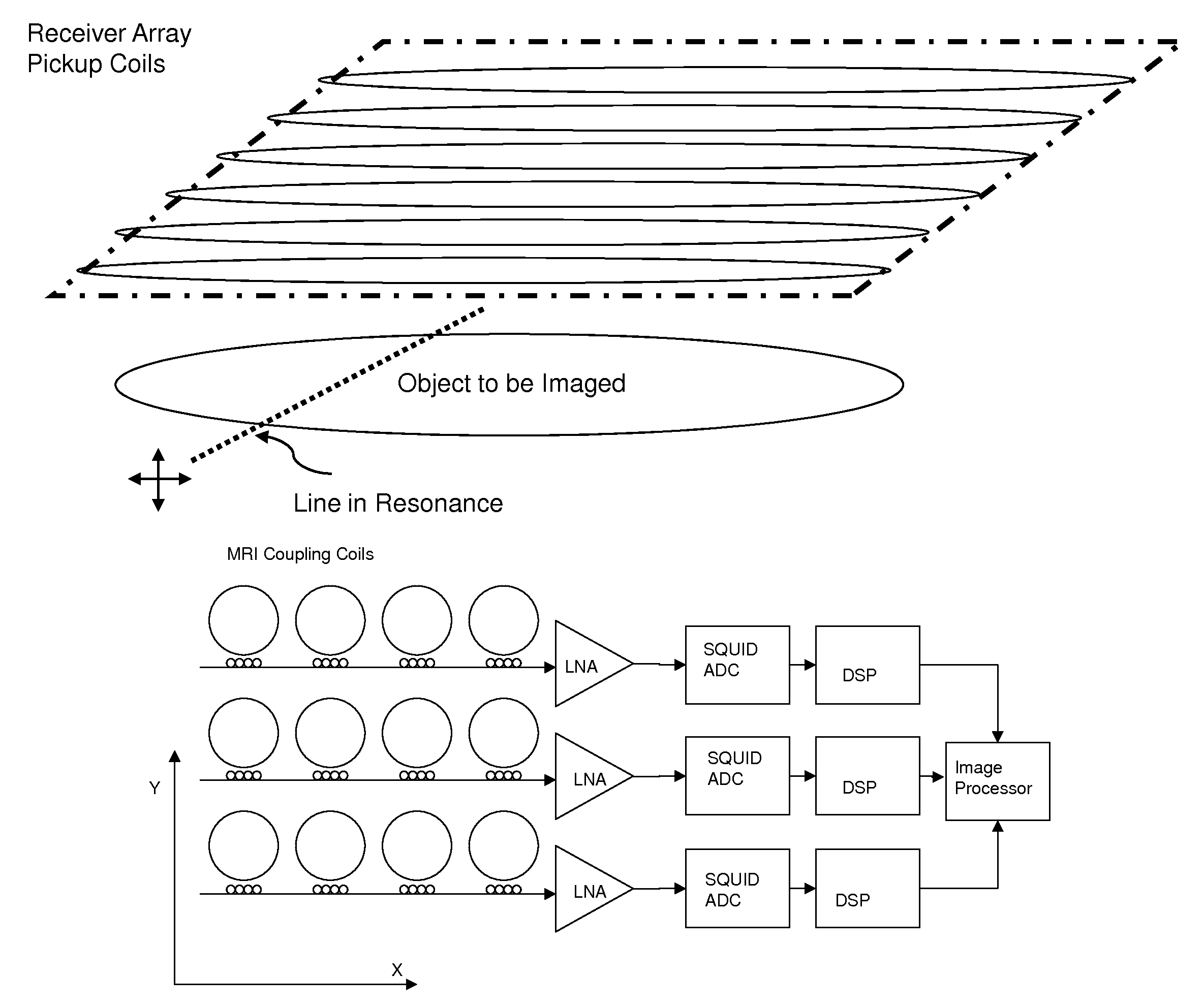Magnetic resonance system and method employing a digital squid
a magnetic resonance and digital squid technology, applied in the field of magnetic resonance system and digital squid, can solve the problems of large system, slow to achieve high resolution imaging over a substantial volume of tissue, inconvenient patient imaging time of many minutes,
- Summary
- Abstract
- Description
- Claims
- Application Information
AI Technical Summary
Benefits of technology
Problems solved by technology
Method used
Image
Examples
Embodiment Construction
[0143]In a conventional MRI system of the prior art, DC magnetic gradient coils produce a magnetic field gradient that is scanned across the object to be imaged. At a given time, only a single volume slice is in resonance with the RF source (and thus excited), and only a single line in K-space is accessed, and the image is developed sequentially. This scanned, sequential nature is what makes the imaging so slow.
[0144]In a preferred embodiment of the MRI system, as shown in FIG. 4, each element of the detector array comprises a magnetic pickup coil or antenna, which is designed to selectively detect local electromagnetic fields surrounding the pickup coil, and generally emitted close to the pickup coil. The entire area may be in resonance, so that scanning of a gradient field across this area is not necessary, and each pixel is derived from a given antenna element. The parallel processing of the data from each antenna is what makes the imaging much faster, with a total imaging time t...
PUM
 Login to View More
Login to View More Abstract
Description
Claims
Application Information
 Login to View More
Login to View More - R&D
- Intellectual Property
- Life Sciences
- Materials
- Tech Scout
- Unparalleled Data Quality
- Higher Quality Content
- 60% Fewer Hallucinations
Browse by: Latest US Patents, China's latest patents, Technical Efficacy Thesaurus, Application Domain, Technology Topic, Popular Technical Reports.
© 2025 PatSnap. All rights reserved.Legal|Privacy policy|Modern Slavery Act Transparency Statement|Sitemap|About US| Contact US: help@patsnap.com



